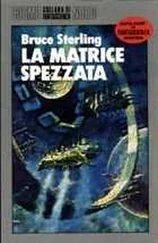Bruce Sterling - Essays. FSF Columns
Здесь есть возможность читать онлайн «Bruce Sterling - Essays. FSF Columns» весь текст электронной книги совершенно бесплатно (целиком полную версию без сокращений). В некоторых случаях можно слушать аудио, скачать через торрент в формате fb2 и присутствует краткое содержание. Жанр: Фантастика и фэнтези, на английском языке. Описание произведения, (предисловие) а так же отзывы посетителей доступны на портале библиотеки ЛибКат.
- Название:Essays. FSF Columns
- Автор:
- Жанр:
- Год:неизвестен
- ISBN:нет данных
- Рейтинг книги:3 / 5. Голосов: 1
-
Избранное:Добавить в избранное
- Отзывы:
-
Ваша оценка:
- 60
- 1
- 2
- 3
- 4
- 5
Essays. FSF Columns: краткое содержание, описание и аннотация
Предлагаем к чтению аннотацию, описание, краткое содержание или предисловие (зависит от того, что написал сам автор книги «Essays. FSF Columns»). Если вы не нашли необходимую информацию о книге — напишите в комментариях, мы постараемся отыскать её.
Essays. FSF Columns — читать онлайн бесплатно полную книгу (весь текст) целиком
Ниже представлен текст книги, разбитый по страницам. Система сохранения места последней прочитанной страницы, позволяет с удобством читать онлайн бесплатно книгу «Essays. FSF Columns», без необходимости каждый раз заново искать на чём Вы остановились. Поставьте закладку, и сможете в любой момент перейти на страницу, на которой закончили чтение.
Интервал:
Закладка:
A swarm of bugs is a strange and seemingly rather far-fetched version of the classic "household robot." But the bug actually seems rather more promising than the standard household robot in 1993, such as the Samsung "Scout-About." This dome-topped creation, which weighs 16 lbs and is less than a foot high, is basically a mobile home-security system. It rambles about the house on its limited battery power, sensing for body-heat, sudden motion, smoke, or the sound of breaking glass. Should anything untoward occur, Scout-About calls the police and/or sets off alarms. It costs about a thousand dollars. Sales of home-security robots have been less than stellar. It appears that most people with a need for such a device would still rather get themselves a dog.
There is an alternative to the no-brain approach in contemporary robotics. That's to use the brain of a human being, remotely piloting a robot body. The robot then becomes "the tele-operated device." Tele-operated robots face much the same series of career opportunities as their brainless cousins -- Dirty, Dull and Dangerous. In this case, though, the robot may be able to perform some of the Dull parts on its own, while the human pilot successfully avoids the Dirt and Danger. Many applications for military robotics are basically tele-operation, where a machine can maintain itself in the field but is piloted by human soldiers during important encounters. Much the same goes for undersea robotics, which, though not a thriving field, does have niches in exploration, oceanography, underwater drilling-platform repair, and underwater cable inspection. The wreck of the *Titanic* was discovered and explored through such a device.
One of the most interesting new applications of tele- operated robotics is in surgical tele-operations. Surgery is, of course, a notoriously delicate and difficult craft. It calls for the best dexterity humans can manage -- and then some. A table-mounted iron arm can be of great use in surgery, because of its swiftness and its microscopic precision. Unlike human surgeons, a robot arm can grip an instrument and hold it in place for hours, then move it again swiftly at a moment's notice without the least tremor. Robot arms today, such as the ROBODOC Surgical Assistant System, are seeing use in hip replacement surgery.
Often the tele-operated robot's grippers are tiny and at the end of a long flexible cable. The "laparoscope" is a surgical cable with a tiny light, camera and cutters at one end. It's inserted through a small hole in the patient's abdominal wall. The use of laparoscopes is becoming common, since their use much reduces the shock and trauma of major surgery.
"Laparoscopy" usually requires two human surgeons, though; one to cut, and one to guide the cable and camera. There are obvious potential problems here from missed communications or simple human exhaustion. With Britain's "Laparobot," however, a single surgeon can control the camera angle through a radio-transmitting headband. If he turns his head, the laparoscope camera pans; if he raises or lowers his head it tilts up and down, and if he leans in, then it zooms. And he still has his hands free to control the blades. The Laparobot is scheduled for commercial production in late 1993.
Tele-operation has made remarkable advances recently with the advent of fiber-optics and high-speed computer networking. However, tele-operation still has very little to do with the classic idea of a human-shaped robot that can understand and follow orders. Periodically, there are attempts to fit the human tele-operator into a human- shaped remote shell -- something with eyes and arms, something more traditionally robotlike. And yet, the market for such a machine has never really materialized. Even the military, normally not disturbed by commercial necessity, has never made this idea work (though not from lack of trying).
The sensory abilities of robots are still very primitive. Human hands have no less than twenty different kinds of nerve fiber. Eight kinds of nerve control muscles, blood vessels and sweat-glands, while the other twelve kinds sense aspects of pain, temperature, texture, muscle condition and the angles of knuckles and joints. No remote-controlled robot hand begins to match this delicate and sophisticated sensory input.
If robot hands this good existed, they would obviously do very well as medical prosthetics. It's still questionable whether there would be a real-world use and real-world market for a remotely-controlled tele-operated humanlike robot. There are many industrial uses for certain separate aspects of humanity -- our grip, our vision, our propensity for violence -- but few for a mechanical device with the actual shape and proportions of a human being.
It seems that our fascination with humanoid robots has little to do with industry, and everything to do with society. Robots are appealing for social reasons. Robots are romantic and striking. Robots have good image.
Even "practical" industrial robots, mere iron arms, have overreached themselves badly in many would-be applications. There have been waves of popular interest and massive investment in robotics, but even during its boom years, the robot industry has not been very profitable. In the mid-1980s there were some 300 robot manufacturers; today there are less than a hundred. In many cases, robot manufacturers survive because of deliberate government subsidy. For a nation to own robots is like owning rocketships or cyclotrons; robots are a symbol of national technological prowess. Robots mark a nation as possessing advanced First World status.
Robots are prestige items. In Japan, robots can symbolize the competition among Japanese firms. This is why Japanese companies sometimes invent oddities such as "Monsieur," a robot less than a centimeter across, or a Japanese boardroom robot that can replace chairs after a meeting. (Of course one can find human office help to replace chairs at very little cost and with great efficiency. But the Japanese office robot replaces chairs with an accuracy of millimeters!)
It makes a certain sense to subsidize robots. Robots support advanced infrastructure through their demand-pull in electronics, software, sensor technology, materials science, and precision engineering. Spin-offs from robotics can vitalize an economy, even if the robots themselves turn out to be mostly decorative. Anyway, if worst comes to worst, robots have always made excellent photo-op backgrounds for politicians.
Robots truly thrive as entertainers. This is where robots began -- on the stage, in Mr. Capek's play in 1921. The best-known contemporary robot entertainers are probably "Crow" and "Tom Servo" from the cable television show MYSTERY SCIENCE THEATER 3000. These wisecracking characters who lampoon bad SF films are not "real robots," but only puppets in hardshelled drag; but Crow and Tom are actors, and actors should be forgiven a little pretense. Disney "animatronic" robots have a long history and still have a strong appeal. Lately, robot dinosaurs, robot prehistoric mammals, and robot giant insects have proved to be enormous crowd-draws, scaring the bejeezus out of small children (and, if truth be told, their parents). Mark Pauline's "Survival Research Laboratories" has won an international reputation for its violent and catastrophic robot performance-art. In Austin Texas, the Robot Group has won a city arts grant to support its robot blimps and pneumatically-controlled junk-creations.
Man-shaped robots are romantic. They have become symbols of an early attitude toward technology which, in a more suspicious and cynical age, still has its own charm and appeal. In 1993, "robot nostalgia" has become a fascinating example of how high-tech dreams of the future can, by missing their target, define their own social period. Today, fabulous prices are paid at international antique toy collections for children's toy robots from the '40s and '50s. These whirring, blinking creatures with their lithographed tin and folded metal tabs exert a powerful aesthetic pull on their fanciers. A mint-in- the-box Robby Robot from 1956, complete with his Space Patrol Moon Car, can bring over four thousand dollars at an auction at Christie's. Thunder Robot, a wondrous creation with machine-gun arms, flashing green eyes, and whirling helicopter blades over its head, is worth a whopping nine grand.
Читать дальшеИнтервал:
Закладка:
Похожие книги на «Essays. FSF Columns»
Представляем Вашему вниманию похожие книги на «Essays. FSF Columns» списком для выбора. Мы отобрали схожую по названию и смыслу литературу в надежде предоставить читателям больше вариантов отыскать новые, интересные, ещё непрочитанные произведения.
Обсуждение, отзывы о книге «Essays. FSF Columns» и просто собственные мнения читателей. Оставьте ваши комментарии, напишите, что Вы думаете о произведении, его смысле или главных героях. Укажите что конкретно понравилось, а что нет, и почему Вы так считаете.



